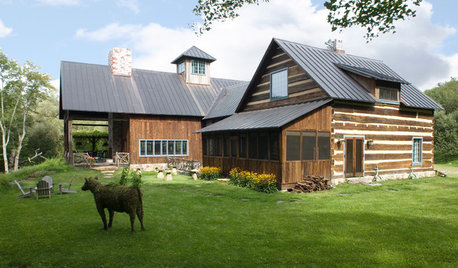Oh No! Did I buy the wrong liquid fertilizer? Kim???
fogrose
10 years ago
Related Stories

GARDENING GUIDESOh, Deer! 10 Native Flowers That Stand Up to the Herds
Keeping a garden amid hungry deer can be hard, but these plants should fare well
Full Story
MOST POPULAR15 Remodeling ‘Uh-Oh’ Moments to Learn From
The road to successful design is paved with disaster stories. What’s yours?
Full Story
GARDENING GUIDESMake Sure You Read This Before Buying New Plants
Follow these 10 plant-selection tips to avoid buyer’s remorse
Full Story
FURNITUREHow to Buy a Quality Sofa That Will Last
Learn about foam versus feathers, seat depth, springs, fabric and more for a couch that will work for years to come
Full Story
MOST POPULAR9 Reasons to Buy a Painting
No print or poster can rival the power of an original painting, chosen by you, for where you live
Full Story
DECORATING GUIDESThe Dumbest Decorating Decisions I’ve Ever Made
Caution: Do not try these at home
Full Story
LIFEThe Polite House: Do I Have to Display Decor Given to Me as a Gift?
Etiquette columnist Lizzie Post tackles the challenge of accepting and displaying home decor gifts from frequent visitors
Full Story
KITCHEN DESIGNShow Us Your Fabulous DIY Kitchen
Did you do a great job when you did it yourself? We want to see and hear about it
Full Story
LIFEThe Polite House: How Can I Kindly Get Party Guests to Use Coasters?
Here’s how to handle the age-old entertaining conundrum to protect your furniture — and friendships
Full StoryMore Discussions









strawchicago z5
michaelg
Related Professionals
Reading Landscape Architects & Landscape Designers · Bridgetown Landscape Architects & Landscape Designers · West Chester Landscape Architects & Landscape Designers · Anderson Landscape Contractors · Bellefontaine Neighbors Landscape Contractors · Cambridge Landscape Contractors · Eagle Landscape Contractors · Fort Mill Landscape Contractors · Fort Wayne Landscape Contractors · Midland Landscape Contractors · Oak Harbor Landscape Contractors · Pompano Beach Landscape Contractors · Annapolis Siding & Exteriors · Boulder Siding & Exteriors · North Reading Siding & Exteriorsstrawchicago z5
diane_nj 6b/7a
roseseek
strawchicago z5
fogroseOriginal Author
roseseek
fogroseOriginal Author
roseseek